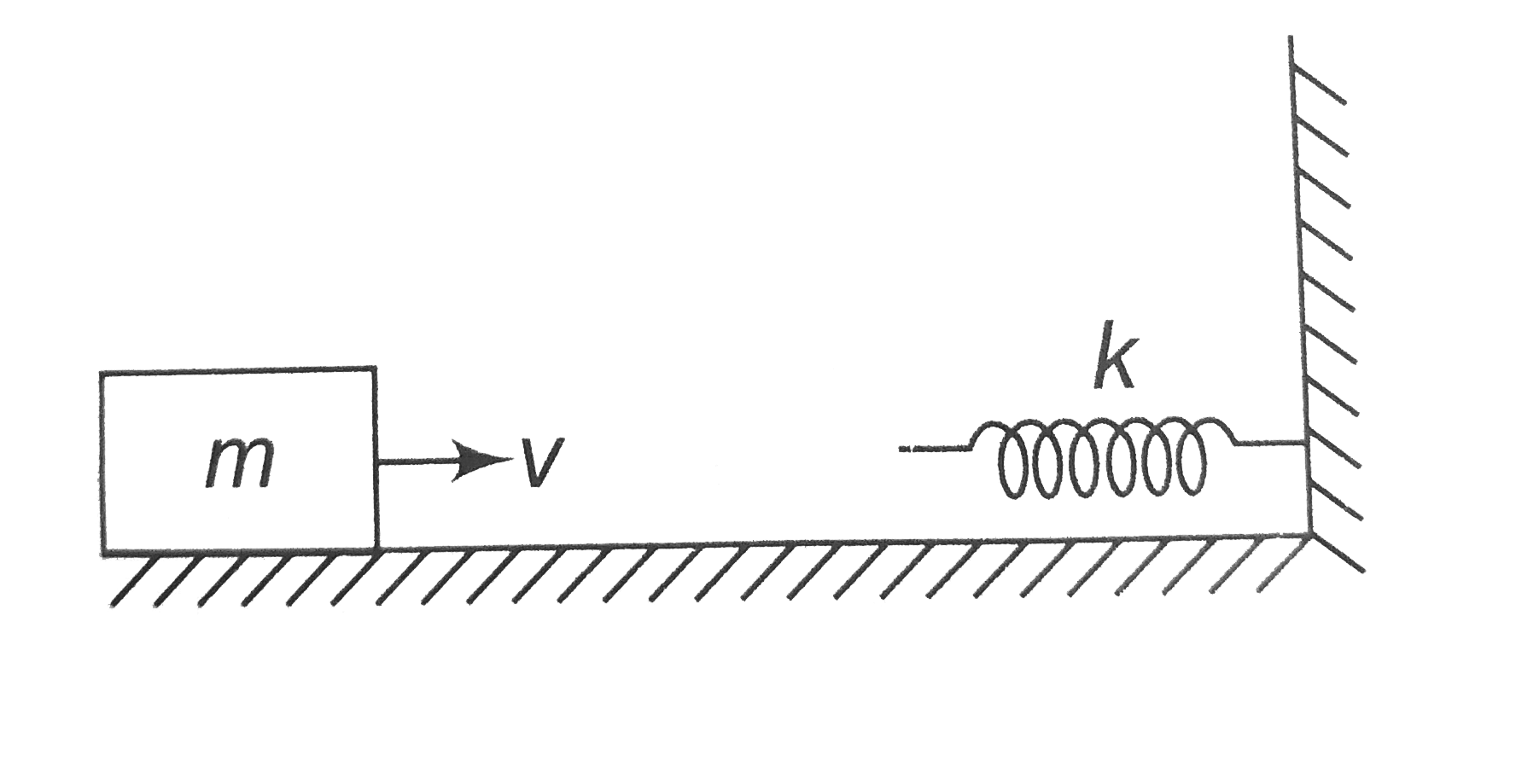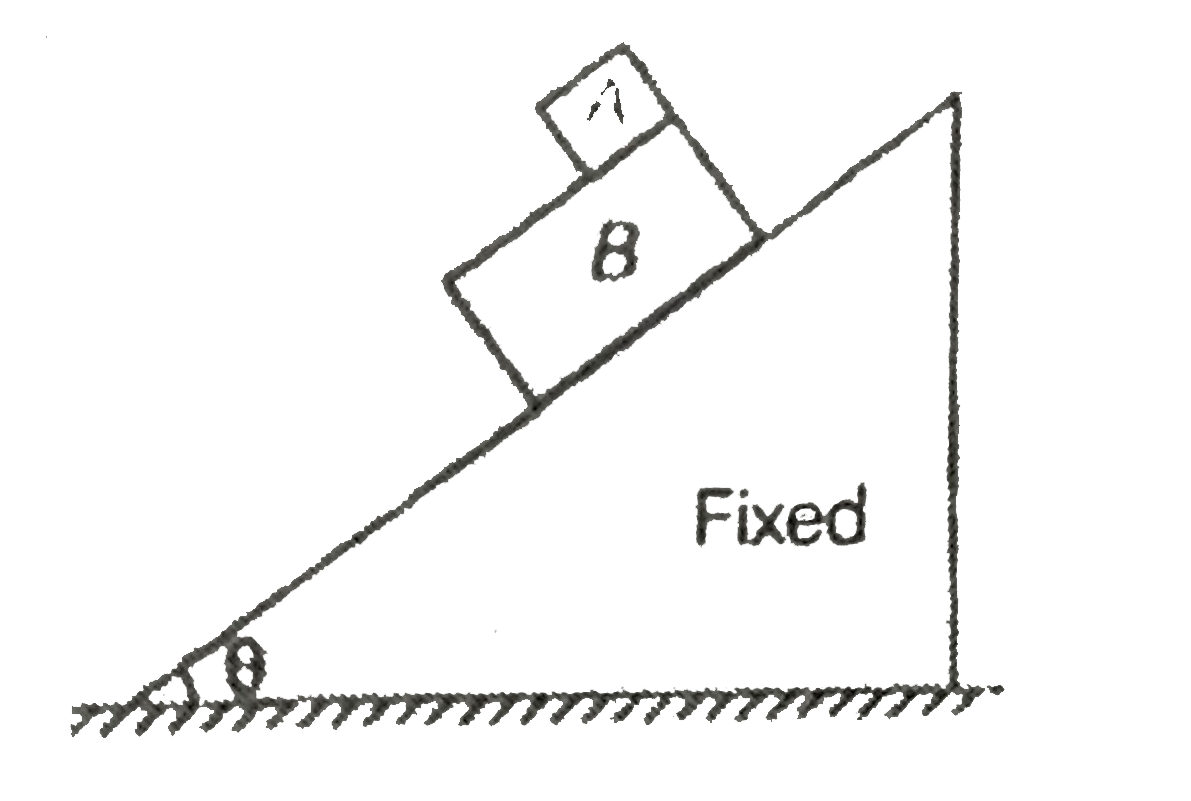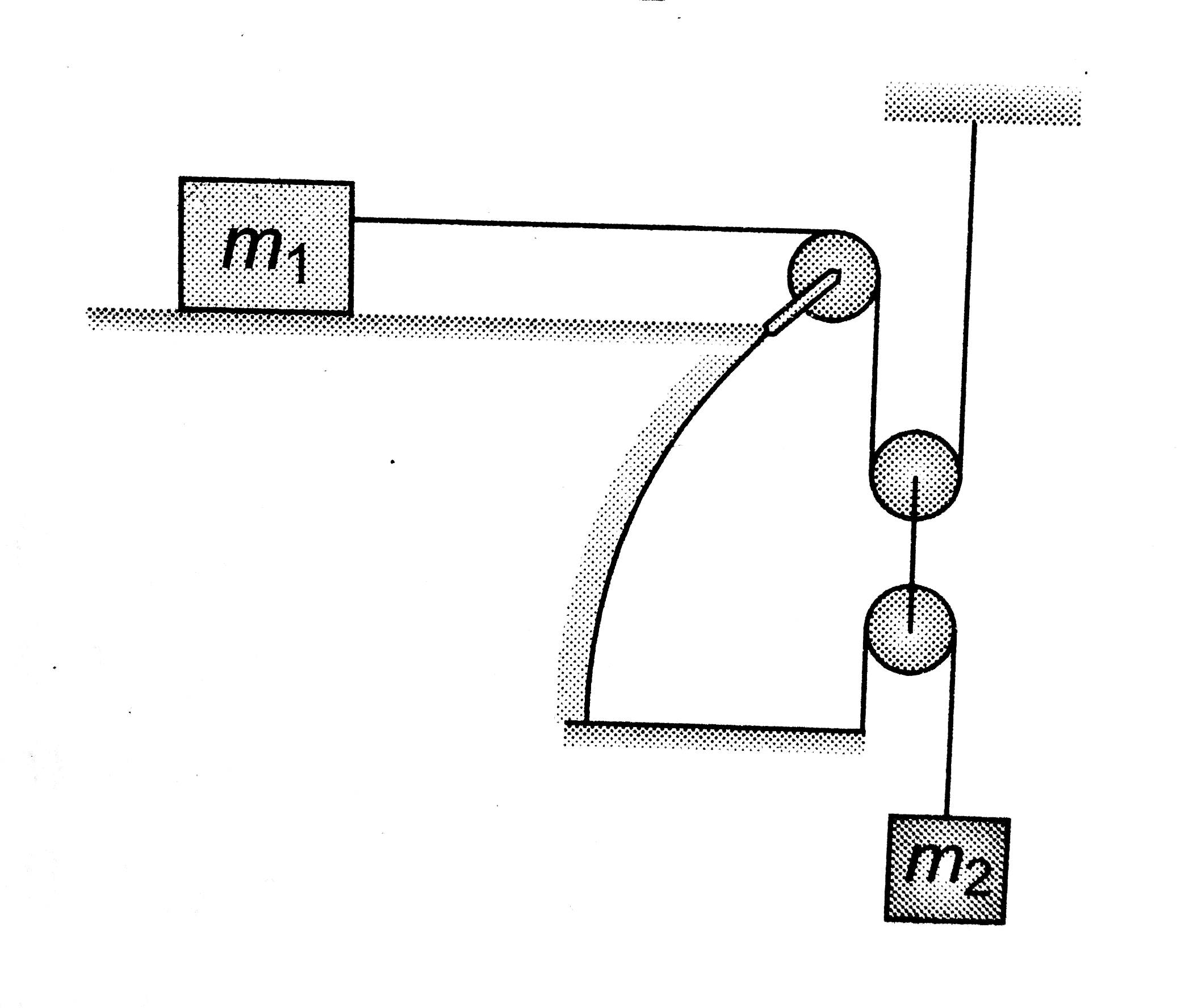Two block of masses m1 and m2 are connected with a massless unstretched spring and placed over a plank moving with an acceleration 'a' as shown in figure. The coefficient of friction between the blocks and platform is μ

Spring will be stretched if a>μg.
Spring will be compressed if a≤μg.
Spring will neither be compressed nor be stretched for a≤μg.
Spring will be in its natural length under all conditions.
The correct Answer is:D
We know that till a≤μg there will be no relative motion between m1 or m2 and platform, i.e., m1 and m2 will move together with the platform and the entire system will have a common acceleration a. Hence, the spring will be in its natural length.
As soon as a>μg, the acceleration of m1 and m2 shall become μg each as it is the maximum acceleration that the friction force is capable of delivering.
Hence at all instants the velocity of m1 and m2 shall be the same. Owing to this fact, the spring shall always remain in natural length as the distance between m1 and m2 never changes.
Topper's Solved these Questions
- NTA TPC JEE MAIN TEST 55BOOK - NTA MOCK TESTSCHAPTER - NTA TPC JEE MAIN TEST 55EXERCISE - PHYSICS (SUBJECTIVE NUMERICAL)
10 Videos
- NTA TPC JEE MAIN TEST 54BOOK - NTA MOCK TESTSCHAPTER - NTA TPC JEE MAIN TEST 54EXERCISE - PHYSICS
30 Videos
- NTA TPC JEE MAIN TEST 56BOOK - NTA MOCK TESTSCHAPTER - NTA TPC JEE MAIN TEST 56EXERCISE - PHYSICS
30 Videos
Similar Questions
Two blocks A and B of respective masses 6 kg and 4 kg are connected with a string passing over a light friction less pulley as shown in the figure . The coefficient of friction between the block A and horizontal surface is 0.4 . Then the minimum mass of block C which should be placed over A to prevent it from moving is :

View SolutionA small block of mass 'm' is placed on a plank of mass 'M'. The block is connected to plank with the help of a light string passing over a light smooth pulley as shown in figure. The co-efficient of static friction between the block and plank is μ.

The co-efficient of friction between the plank and the horizontal surface is zero. What maximum horizontal force F applied on the block of mass m can make the block and plank not to slide relatively?
View Solution
Knowledge Check
Two blocks of masses m1 and m2 are placed in contact with each other on a horizontal platform as shown in figure The coefficent of friction between m1 and platform is 2μ and that between block m2 and platform is μ.The platform moves with an acceleration a . The normal reation between the blocks is
 Azero in all casesBzero only if m1=m2Cnon zero only if a>2μgDnon zero only if a>μg
Azero in all casesBzero only if m1=m2Cnon zero only if a>2μgDnon zero only if a>μgTwo blocks of masses m1 and m2 are connected by a massless spring and placed on smooth surface. The spring initially stretched and released. Then :
Athe momentum of each particle remains constant separatelyBthe magnitude of momentums of each body are equal to each otherCthe mechanical energy of system remains constantDboth (C) and (B) are correctA block of mass m is moving with a speed v on a horizontal rough surface and collides with a horizontal mounted spring of spring constant k as shown in the figure .The coefficient of friction between the block and the floor is μ The maximum compression of the spring is
 A−μmgk+1k√(μmg)2+mkv2Bμmgk+1k√(μmg)2+mkv2C−μmgk+1k√(μmg)2−mkv2Dμmgk+1k√(μmg)2+mkv2
A−μmgk+1k√(μmg)2+mkv2Bμmgk+1k√(μmg)2+mkv2C−μmgk+1k√(μmg)2−mkv2Dμmgk+1k√(μmg)2+mkv2
A block A slides over an another block B which is placed over a smooth inclined plane as shown in figure . The coefficient of friction between the two blocks A and B is μ . Mass of block B is two times the mass of block A . The acceleration of the centre of mass of two blocks is

View SolutionTwo block of same mass'm' are joined with an dideal spring of spring constant k and sept on a rough surface as shown in figure. The spring is initially unstretched and coefficient of friction between the blocks and horizontal surface is μ and 2μ respectively. What should be the maximum speed of block 'A' such that the block 'B' does not move ?

View SolutionTwo blocks of masses m1 and m2 are connected by a spring having spring constant K. Initially , the spring is at its natural length. The coefficient of friction between the blocks and the surface is μ. What minimum constant force has to be applied in the horizontal direction to the block of mass m1, in order to shift the other block ?
View Solution
Two blocks of masses m1 and m2 are connected as shown in the figure. The acceleration of the block m2 is :
View SolutionTwo block of masses m1 and m2 are connected as shown in the figure. The acceleration of the block m2 is:

View Solution
